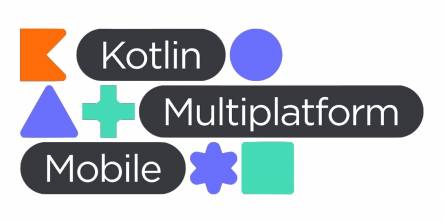Big Data and Traditional Data Testing - A Comparative Study

Over evolution in software testing, two prominent testing methodologies have surfaced: Big Data Testing and Traditional Database Testing. Big Data Testing is tailored for handling the extensive amounts, diverse types, and rapid data flow inherent in the big data environment. Conversely, Traditional Testing is a proven approach that addresses structured and smaller data volumes, utilizing established methods and standard validation tools. As the digital landscape advances, discerning the distinctions between these testing methodologies has grown significantly.
With this article, I will explore the distinctions between Big data testing and traditional testing approaches to help make the right decision for your software development process.
Big data Vs. Traditional data testing
Data types
Big Data Testing: Big data covers many types, including structured, semi-structured, and unstructured data. Semi-structured data comprises XML files or NoSQL databases, whereas unstructured data encompasses text files, images, audio, video, and social media posts. The diversity in data types is a crucial feature of big data.
Traditional Database Testing: Traditional data is typically structured. This means it is organized highly systematically and predictable, often stored in relational databases or spreadsheets. Examples include data from CRM systems, ERP systems, and transaction databases.
Data volume
Big Data Testing: As implied by its name, big data encompasses an extensive amount of information, spanning from terabytes (TB) to petabytes (PB) and even exabytes (EB). Due to its sheer volume, conventional data processing tools are inadequate for handling it. Specialized processing frameworks like Hadoop or Spark are necessary for practical analysis and management.
Traditional Database Testing: The volume of conventional data is relatively small. It is manageable and can be processed using standard data processing tools. The data volume typically ranges from kilobytes (KB) to terabytes (TB).
Infrastructure
Big Data Testing: Big Data employs a distributed architecture where data is spread across multiple servers or nodes, which could be physical or cloud-based. This distributed method boosts scalability and performance by enabling data processing in parallel and requires specialized products and protocols.
Traditional Database Testing: Traditional data operates on a centralized database architecture, implying that all data is consolidated and managed in a single location, a physical server, or a cloud-based platform. While this centralized method simplifies data management and security, it may limit scalability and performance.
Validation tools
Big Data Testing: The sheer volume and intricacy of Big Data make it challenging to process and analyze using conventional data management tools. Consequently, specialized technologies such as Hadoop, Spark, and NoSQL databases have arisen to address the unique demands of storing, managing, and analyzing extensive datasets. These tools are tailored to handle the volume, velocity, and variety inherent in Big Data.
Traditional Database Testing: Traditional data is handled and accessed using Structured Query Language (SQL) and other conventional data analysis tools. These tools are specifically designed to manage structured data, enabling easy processing and analysis to derive business insights.
Data analysis
Data analysis in big data and traditional data differ significantly due to the nature of the data they handle.
Big Data Testing: Analyzing large datasets, known as big data, may require the application of advanced methods like machine learning, given the scale and intricacy involved. Big data, characterized by its three Vs—volume, velocity, and variety—encompasses various forms, including structured, semi-structured, and unstructured data such as images, text, and videos. The intricacies of such data often surpass the capabilities of conventional data management tools and methods. Consequently, specialized big data technologies like Hadoop, Spark, and NoSQL databases have been created to aid organizations in storing, managing, and analyzing vast amounts of data.
Traditional Database Testing: Traditional data analysis usually employs statistical techniques and visualizations. The data, structured and stored in databases or spreadsheets, is easily analyzed using standard methods to derive insights into business operations. Applications like SQL and various data analysis software are employed to process and manually examine data. These tools can generate reports and visualizations, playing a vital role in facilitating informed decision-making by discerning trends and patterns within the data.
Velocity
Data velocity is the speed at which data is generated, processed, and analyzed.
Big Data Testing: Big Data is known for its high velocity. It is perpetually evolving and updated in real-time or near real-time. This swift data generation and updating pace is attributed to the widespread use of digital devices and platforms that incessantly generate data. For instance, social media platforms generate extensive data every second, while IoT devices can send updates multiple times per second. The rapid pace of big data requires the application of specialized technologies like stream processing and real-time analytics for capturing, processing, and analyzing data as it is generated.
Traditional Database Testing: Conventional data is generally unchanging and undergoes periodic updates, occurring daily, weekly, monthly, or annually, contingent on the context. For example, a business may renew its sales database daily, while a research institution could revise its climate data monthly. The relatively low velocity of traditional data enables it to be managed and analyzed using standard data processing technologies.
Final Words
Both big data and traditional testing have unique advantages and are suited to different scenarios.
Big data testing tools are specifically crafted to manage the challenges posed by the volume, velocity, and variety of big data. These tools excel in processing and analyzing extensive amounts of structured, semi-structured, and unstructured data in real-time or near real-time. Their capability extends to providing valuable insights that contribute to business growth and informed decision-making. Furthermore, these tools offer scalability and performance advantages often absent in traditional counterparts.
While traditional testing methods continue to hold value for specific use cases, the relevance of big data testing is on the rise, driven by its advanced tools and techniques, especially in the context of the modern data landscape. The decision between traditional and big data testing depends on a business's unique needs and capabilities. Nevertheless, given the increasing prevalence of big data, the benefits of big data testing tools make them appealing for enterprises dealing with large and intricate datasets.
Similar Articles
In today's technologically advanced landscape, understanding heat distribution is critical for enhancing efficiency and safety across various sectors. Infrared thermography, a pivotal imaging technique, has revolutionized how professionals view and analyze thermal performance.
In this digital age, there are many options available for marketing, but the one that stands out as one that can transform the marketing realm is programmatic connected TV (CTV). The programmatic CTV approach for advertising shows the changing trend in how brands would like to connect with their audience.
PHP has a dominant market position, with over 79% of websites powered to some degree. Developers majorly utilize organized and leveled PHP basic functions, known as PHP frameworks, to create flexible output.
The nonstop hum of machines around us, from the humongous industrial complexes to the processors within the gadgets, shapes our everyday lives. These mechanical advancements have become essential, driving everything from fundamental necessities to our vehicles, airplanes, and so forth.
New methods of managing a Pilate business are transforming the way studios operate. It simplifies routine tasks and helps fitness businesses to grow and facilitate their customers in various ways.
Discover if the S23 Ultra case is compatible with the S24 Ultra. Get insights on fit, protection, and functionality in this comparison.
In the era of astoundingly quick technological progress, organizations are increasingly feeling the need to adjust to the evolving market demands and their requirements by embracing digital transformation
With the rise of mobile devices and the ever-growing demand for cross-platform solutions, businesses are constantly seeking efficient ways to develop applications that can be used on multiple platforms. This is where Kotlin Multi Platform comes into play. Kotlin Multi-platform is a versatile technology that allows developers to write code once and deploy it on various platforms such as Android, iOS, and web.
Discover reliable network cabling solutions ensuring seamless connectivity for remote work. Enhance productivity with consistent connections anywhere.









